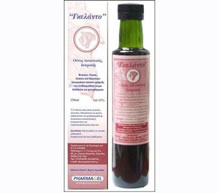
Λεξικό .. Allergy Pathophysiology
Allergy is now understood to be a systemic inflammatory disease. Multiple inflammatory mediators have been identified [1]. These include cytokines, such as the interleukins (IL-3, IL-4, IL-5, IL-9, and IL-13), which promote the production of immunoglobulin E (IgE), airway hyperresponsiveness, the overproduction of mucus, and the development of eosinophils and mast cells, all of which are associated with chronic allergic inflammation. Other inflammatory mediators that have been identified are chemokines, such as 1) eotaxins, 2) RANTES (regulated on activation, normal T cell expressed and secreted), 3) monocyte chemoattractant proteins (e.g. MCP-2 and MCP-3) [2], and 4) thymus- and activation-regulated chemokine (TARC) [3]. These chemotactic cytokines have the ability to attract and activate leukocytes. Adhesion molecules, such as intercellular adhesion molecule-1 (ICAM-1), vascular cellular adhesion molecule-1 (VCAM-1), and selectins (e.g. selectin-P, selectin-E), are surface ligands that mediate cell-to-cell adhesion and diapedesis. Chemokines recruit eosinophils and basophils, and adhesion molecules promote the accumulation of inflammatory cells, processes that are central to the maintenance of chronic allergic inflammation.
References
1. Kay AB. Allergy and allergic diseases. First of two parts. N Engl J Med 2001;344: 30-37.
2. Bousquet J, Van Cauwenberge P, Khaltaev N. Allergic rhinitis and its impact on asthma. J Allergy Clin Immunol 2001;108(5 Suppl.):S147-S334.
3. Sekiya T, Yamada H, Yamaguchi M et al. Increased levels of TH2-type CC chemokine thymus and activation-regulated chemokine (TARC) in serum and induced sputum of asthmatics. Allergy 2002;57: 173-177.
Γκέλης Ν.Δ. - Λεξικό Αλλεργίας - Εκδόσεις ΒΕΛΛΕΡOΦΟΝΤΗΣ - Κόρινθος 2013
Gelis Ν.D. - Dictionary of Allergies - VELLEROFONTIS Publications - Corinth 2013




